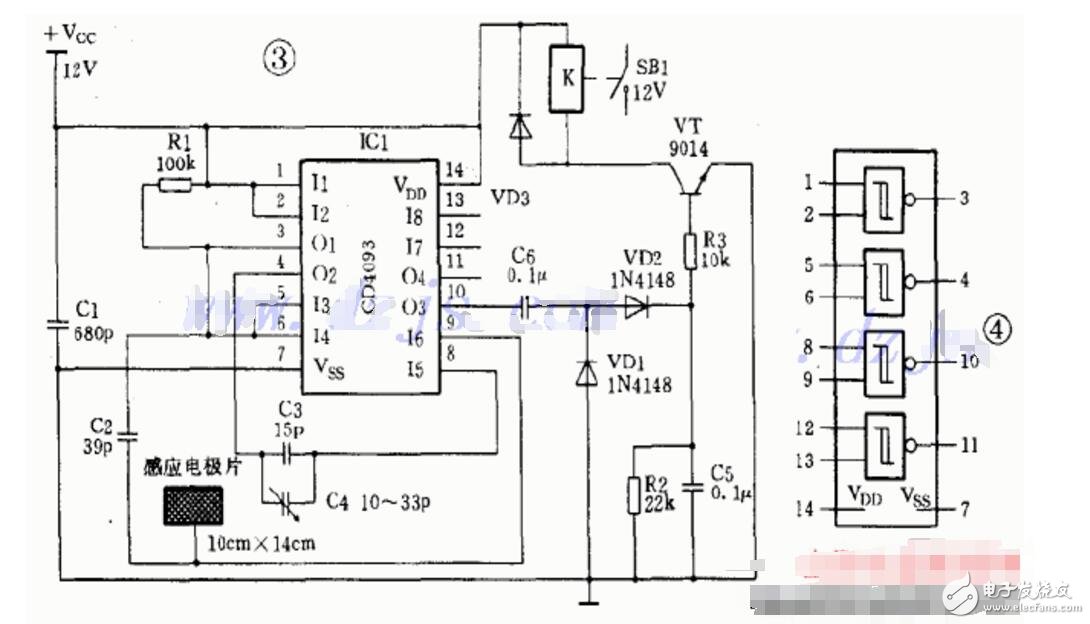The CD4093 is a member of the CD series of digital integrated circuits, manufactured using CMOS technology. It contains four Schmitt trigger NAND gates, each with two inputs. These gates are designed to switch states at different voltage thresholds depending on whether a positive or negative polarity signal is applied. The difference between the positive (VP) and negative (VN) switching points is determined by the hysteresis voltage (VH). Today, we'll explore the capacitive inductive control circuit that uses the CD4093.

Figure 3: A capacitive inductive control circuit built using an integrated circuit
The circuit shown in Figure 3 primarily uses the CD4093, a four-input NAND gate IC (as seen in Figure 4). One of the NAND gates, along with resistors R1 and capacitor C1, forms a 400Hz square wave oscillator. The output from this oscillator splits into two paths: one goes directly to another NAND gate (pins 4, 5, 6), while the other passes through capacitor C2 to a third NAND gate (pins 8, 9, 10). Since IC2 is configured as a NOT gate, its output is 180 degrees out of phase with its input. This signal is then coupled to the second input of IC3 via capacitors C3 and C4. Under normal operation, both inputs of IC3 have opposite phases, ensuring that at least one input remains low, resulting in a stable high output from IC3. Due to the presence of capacitor C6, transistor VT1 remains off. However, if the input signal to either of IC3's inputs is lost or reduced below the threshold level, IC3 will start producing a square wave. This signal is then rectified by diodes VD1 and VD2, which turns on transistor VT1, allowing power to be supplied to the relay and causing it to activate. Capacitor C4 plays a crucial role in adjusting the sensitivity of the circuit. For maximum sensitivity, you can adjust C4 until the relay just engages, then fine-tune it to ensure it just disengages before sealing it with high-frequency wax or insulating paint. All components used in this circuit are readily available. However, since the CD4093 is a CMOS IC, it is susceptible to electrostatic discharge from soldering irons. To prevent damage, it’s recommended to use an IC socket during testing. Once everything is working properly, insert the CD4093 into the socket. The sensing electrodes can be made from metal sheets or cans for practical implementation.6.35Mm Connector,Speakon Female Connector,1/4 Male Ts Speaker Cable,6.35 Mmm Guitar Connector
Changzhou Kingsun New Energy Technology Co., Ltd. , https://www.aioconn.com